Q Acoustics Q Active 200 Review
Q Acoustics Q Active 200 Review
An ambitious and impressive foray into uncharted waters for Q Acoustics
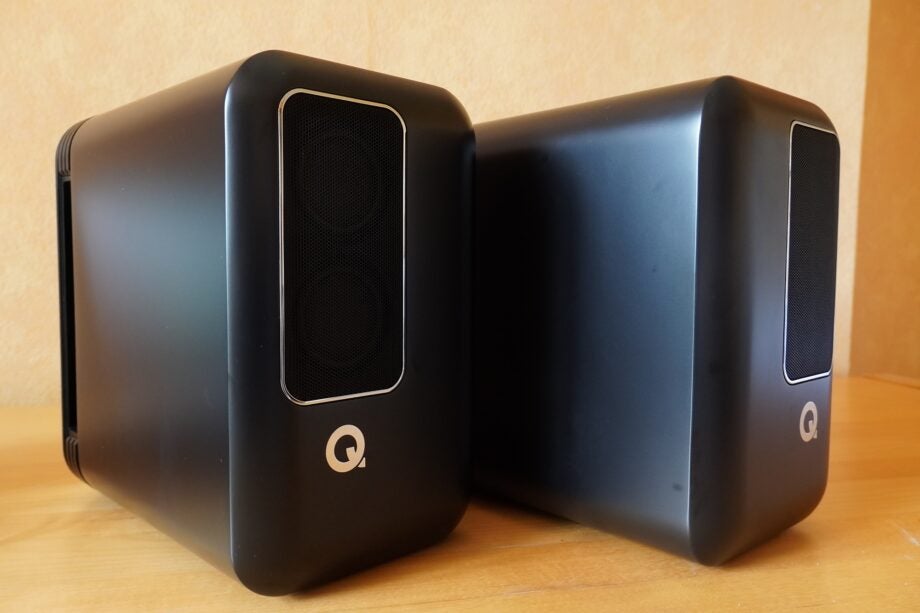
Verdict
The Q active 200 are an impressive pair of active speakers and streaming system rolled into one. There versatility in terms of connectivity is a boon and their flexibility in terms of placement makes them easy to adapt to any room. Taut bass and a measured, controlled output means it can err towards sounding refined rather than exciting, but this is an ambitious system that acts like a rug to knit all your gear into one wireless system.
Pros
- Wide, spacious sound
- Versatile connectivity options
- Well-built and stylish
- Measured, detailed, transparent sound
- Flexible positioning options
Cons
- Stands are pricey extra
- Somewhat reserved presentation may lack excitement for some
- Not the biggest bass presentation
Key Specifications
- Review Price: £1499
- HDMI ARC
- Class D amplification
- 4.5-inch subwoofer driver
- Built-in Chromecast
- FS75 floor stands
- Bluetooth 4.1, AirPlay 2, Spotify Connect, Roon Ready
- Dual 2.25-inch Balanced Mode Radiator (BMR) drivers
Q Acoustics has called its Q Active 200/Q Active 400 speaker systems its most significant product launch to date – and it’s not hard to see why.
Built to be uncompromisingly audiophile, the Q Active 200 stand-mounts aren’t the first pair of active speakers from the company (that honour belongs to the QBT3). But if you look at the company’s history these are arguably its most ambitious.
A hi-fi speaker that’s a streaming system that’s ‘smart’, too? The Q Actives are a grand attempt at being the go-to audio system for any room.
Q Acoustic Active 200 price and availability
While they are not the priciest speakers to leave the Q Acoustics’ factory, the Q Active 200 system comes in two flavours. There’s the Google Hub version that’s been on sale since November 2020, and the Alexa hub that was meant to join it in January 2021 but has slipped to a ‘summer 2021’ release.
Both versions cost the same at £1499 / $1999 / €1999 / AU$3199. The Q FS75 speaker stands are optional and priced at £349 / $499 / €419 / AU$799 per pair. The whole package does not come cheap.
The Q Active 400 floorstanders, by the way, are due to arrive later in 2021.
Q Acoustic Q Active 200 design – Some assembly required (if you get the stands)
- Well built and classy looks
- Can be paired with (optional) Q FS75 stands
- Remote is nice to use
- Takes a while to assemble the stands
The Q Active 200 system flaunts a sleek look with its black finish that’s also a magnet for smudges and fingerprints. The small speaker grilles and chromium trims add character, and from the shape of the cabinet to that chrome embossed logo on its front, it has the look and feel of a high quality speaker.
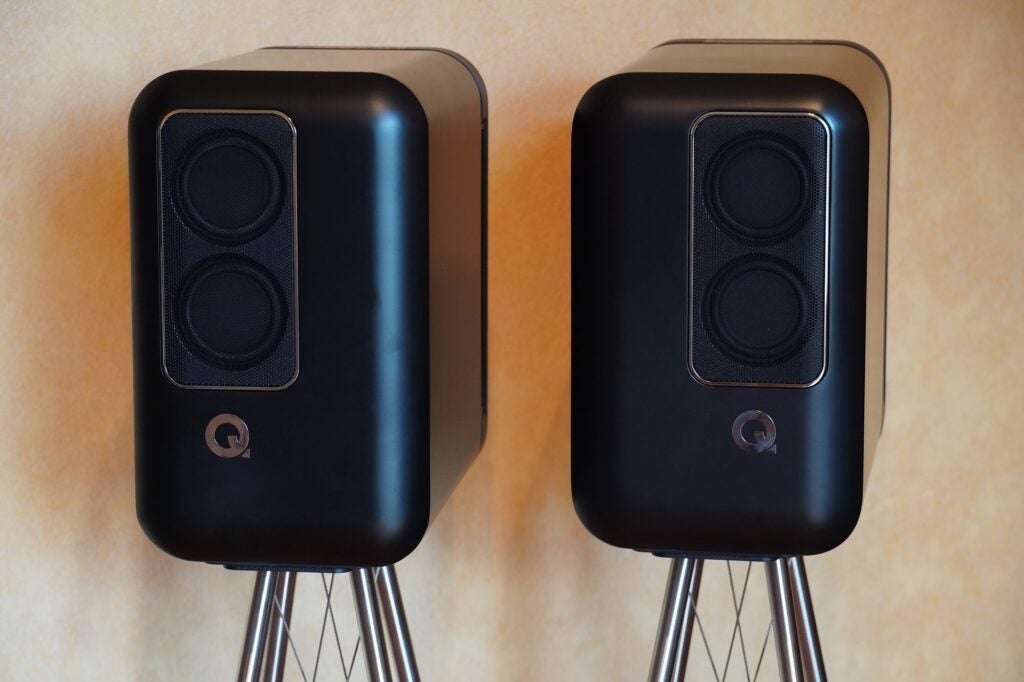
In its black guise it looks like it mean business and feels well built, though surprisingly it’s not all that heavy even at 7.5kg per speaker. At 284 x 170 x 290 (WHD, mm) they’re a closer match to the 3020i speaker but smaller than the Q Acoustics 3030i bookshelf speaker. That ought to make them somewhat malleable in terms of placement as they could – just about – fit into a bookshelf.
Or you could go down the route of the bespoke Q FS75 stands, which give the Q Active 200 an even greater sense of style. The philosophy behind the Q FS75 stand is similar to the Concept 300’s Tensegrity stand, but uses four legs instead of three. The purpose is to minimise reflections and reduce resonance so they intrude less on the speaker’s performance, another salvo in the never-ending battle of balance between the stand, speaker and surrounding environment.
At £349 a pair they’re not what you’d call cheap. Putting the stand together took over an hour (due to my own failings) and assembly can feel like a chore but the results are incredibly stylish. This system would elevate the décor of any room. You can add rubber feet to the bottom of the stand and there are clip-ons to hold the power cable in place.
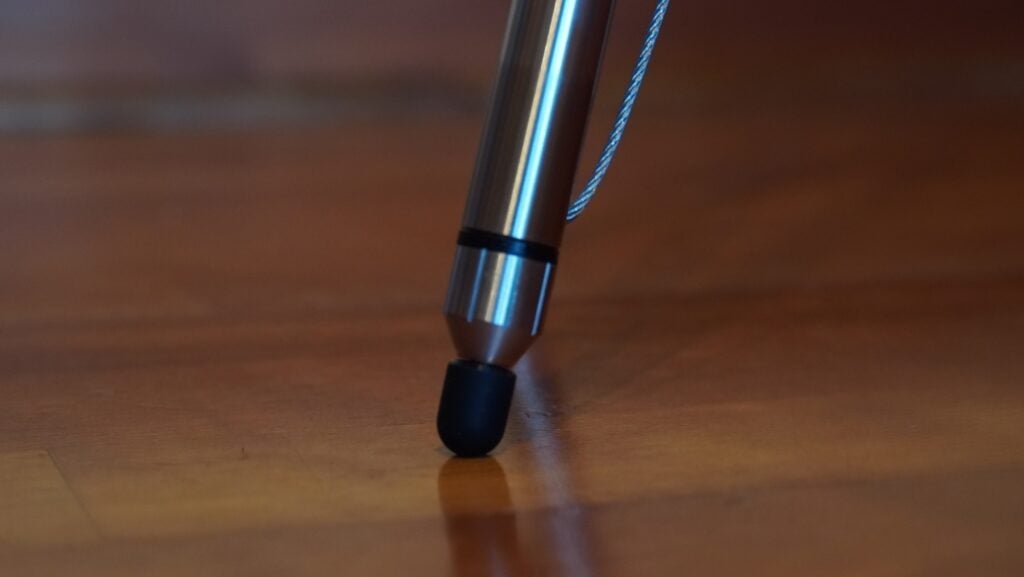
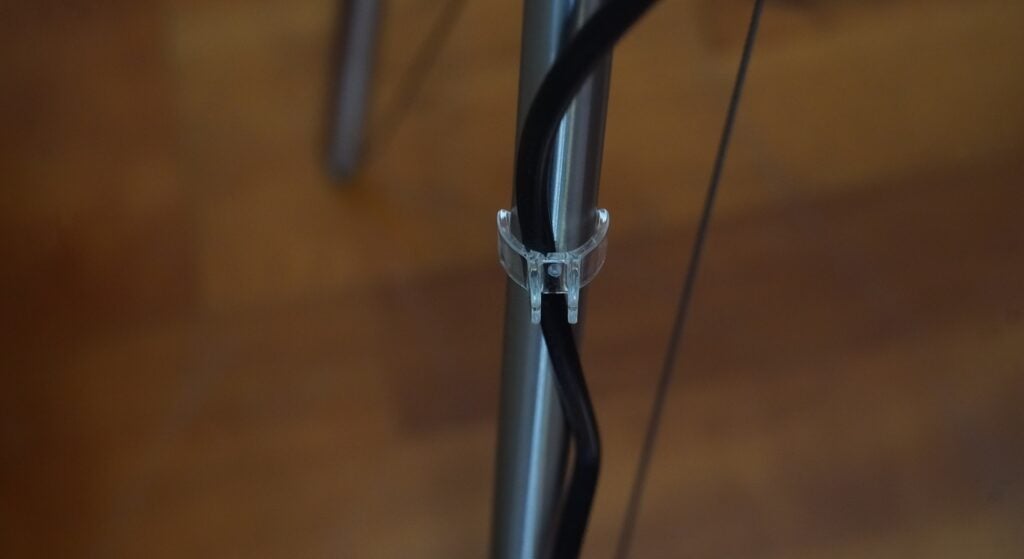
You could, mind you, pair the Q Active 200 with another pair of stands. Q Acoustics does say the Q FS75 offers the most harmonised performance, and I’d surmise the tensile strength they offer would be of great benefit when the speakers are at their most animated.
Inside the cabinet are dual 2.25-inch Balanced Mode Radiator (BMR) drivers. They occupy less space than a traditional driver set-up would, which has freed up space to position the bass driver at the rear. The integrated 4.5-inch subwoofer drive unit is powered by its own dedicated power amplifier, and you can catch a glimpse of the unit around the ported rear.
There’s 280W of power coursing through each cabinet at peak performance, and the benefit of BMR drive units is a wider dispersal of sound and a more even presentation. That reduces that need for a sweet spot that traditional hi-fi speakers require to operate at their best. Moving from one side to another while music is playing, there’s no discernible hole or gap in the soundstage.
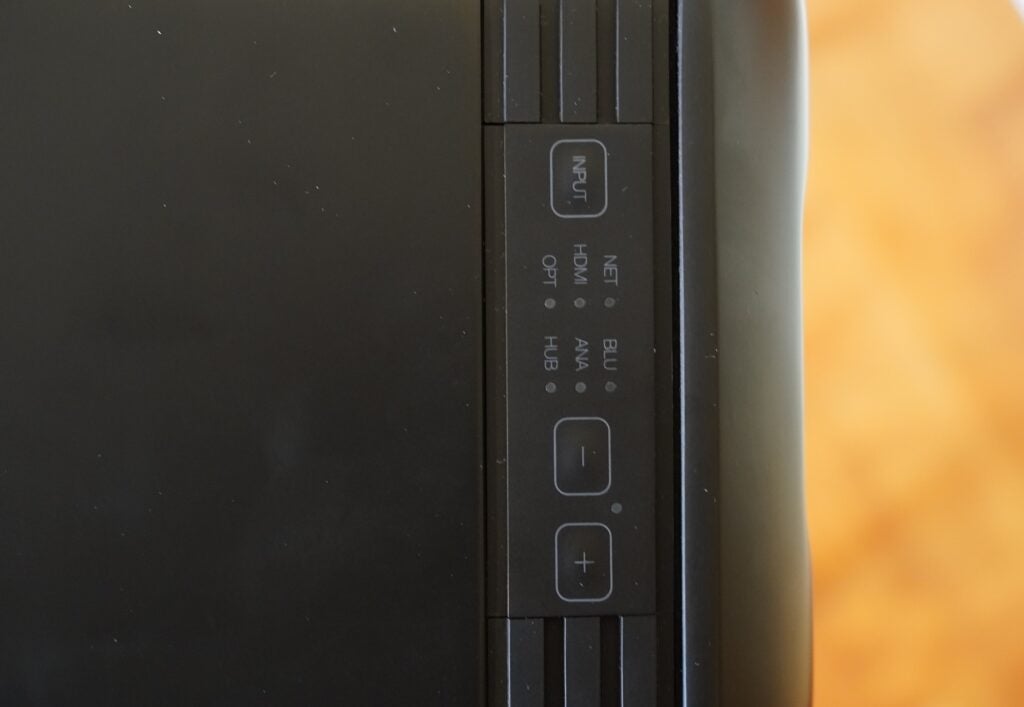
At the bottom rear-end of the speaker are various switches, the use of which I’ll elaborate on in the next section. On top of the speaker are physical buttons for volume alongside LED lights to indicate input source, I/O and connection to the Hub. Conveniently, and presumably intended, I can see the lights from my seating position.
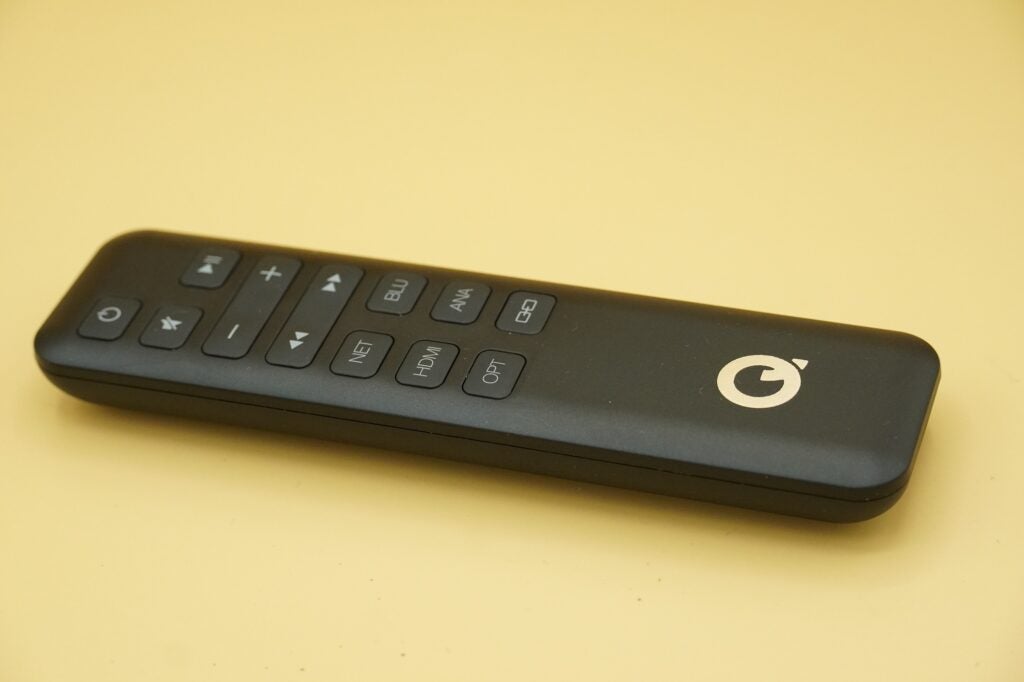
If you can’t be bothered to rise from your seating position then there’s a remote to save you from burning a few calories. It works well with good, cushy button pushes and it enables quick switching between inputs. I can go from listening to the TV’s audio being outputted to switching to Wi-Fi (NET) and flinging a track at the system in no time at all.
Q Acoustics Q Active 200 features – Get yourself connected
- Simple set-up process
- Varied physical and wireless connection options
- Lots of freedom for speaker placement
At the heart of the Q Active 200 is the control Hub that acts as its wireless ‘nervous system’. It is through the Hub that it connects to the Wi-Fi and sets up either the ‘works with’ Google or the upcoming ‘works with’ Alexa version.
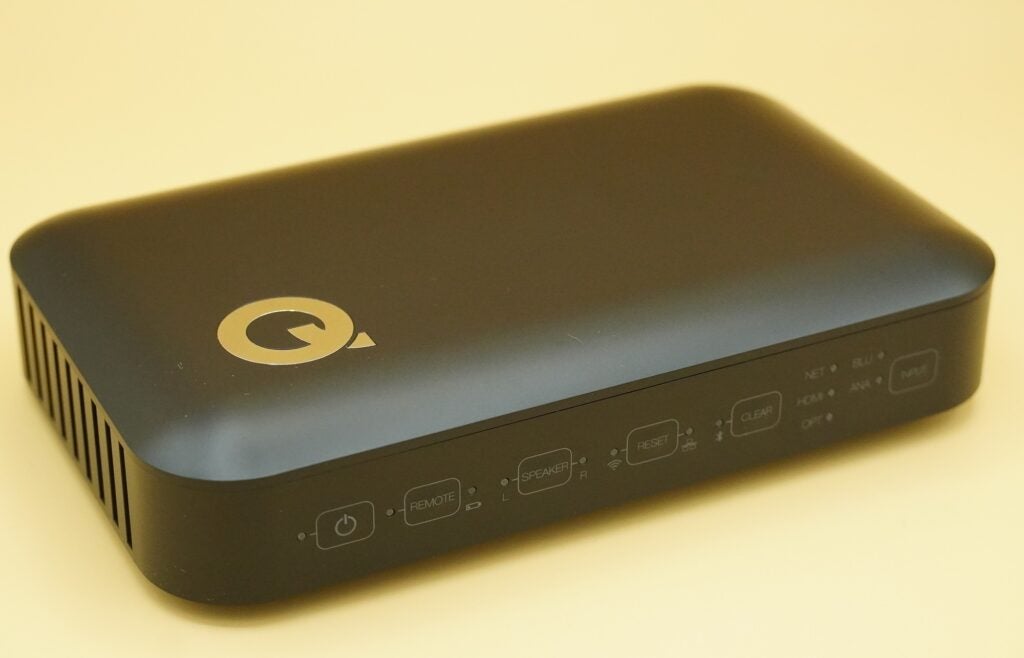
With access to the former, set-up is a painless process through the Google Home app. Once up and running the app offers multi-room functionality with other compatible products, as well as streaming over Chromecast (24-bit/96kHz) and casting audio natively to the speakers via a choice of Amazon Music, Apple Music, Spotify, Deezer, Qobuz and TIDAL music streaming services.
There is a Q Active app, or at least there will be one by the end of March. It will cover registration of the system, operation and firmware updates.
The Hub also offers physical connections around its rear, so there’s HDMI ARC (no eARC here) and that opens the Q Active 200 system for TV use. Also included is an optical input that opens up device connectivity even further, along with a Sub out for more bass plus an analogue input for connection to a turntable that can be switched between line-level or moving magnet (MM). Whatever set-up you have, the Q Active 200 just wants to get connected.
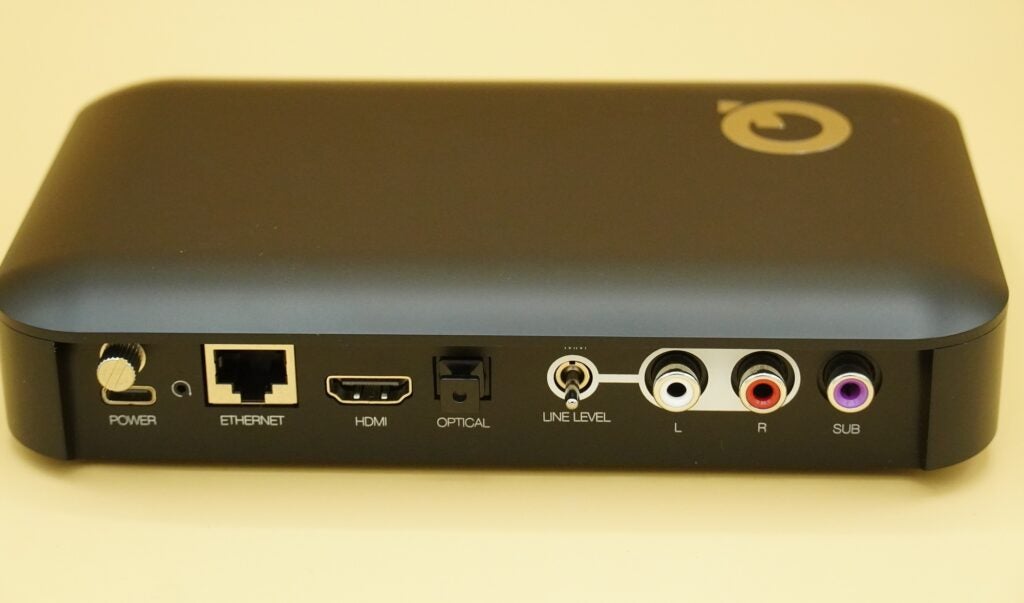
I should add that the Hub accepts 32-bit/192kHz signals but converts them to 24-bit/192kHz for playback and that’s the same output as the KEF LS50 Wireless II. Also supported is AirPlay 2, Bluetooth 4.1, Alexa Multi-Room-Music (with the Alexa hub) and UPnP (for streaming from a computer or NAS drive), while the Q Active system is now confirmed as Roon Ready. The Hub will remember what volume each input is at unless it’s completely disconnected from a power source, so no need to worry about haywire volume levels when flicking between inputs.
Now, about those switches I mentioned earlier. One is for determining which speaker occupies the left/right channel, and that offers flexibility in terms of placement especially once you take into account the speaker’s BMR drive units.
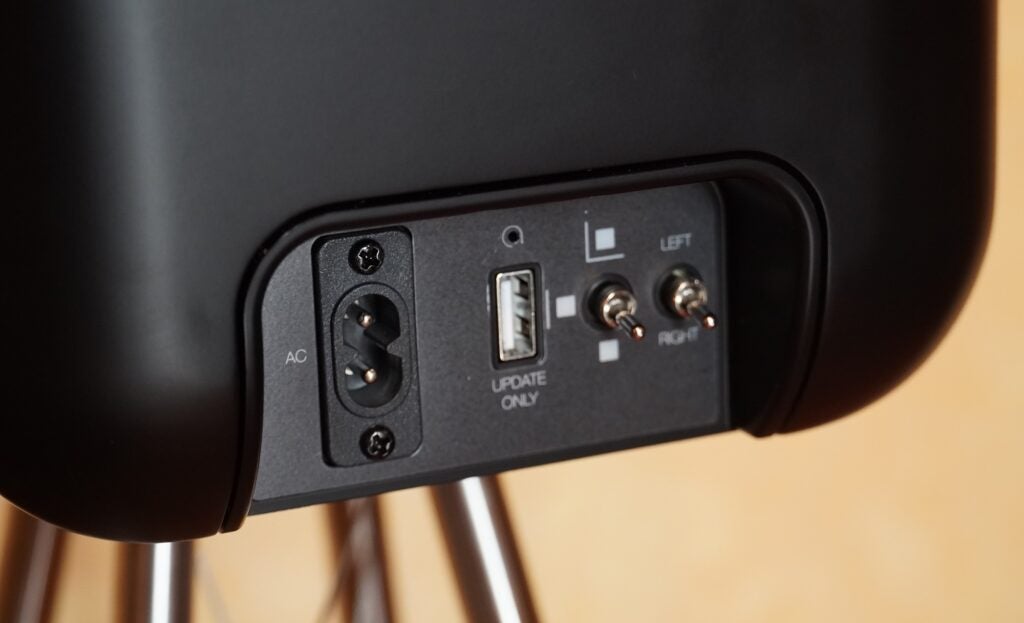
For example, you could choose to have these speakers toed in (i.e. pointed towards) to the listening position or toed out; or you could have the BMR drive units lined up on the inside or outside (I’ve decided on the former). There is no wrong approach and that’s one of the novel ideas about this speaker system.
The second switch next to the USB service input can be flicked into three positions to indicate where the speaker is situated for optimal sound. The three options cover positioning in a corner, placement next to a wall or free-standing in a room, which is the path I’ve chosen. There’s no means of auto-calibration à la Sonos Trueplay.
Q Acoustic Q Active 200 performance – Smooth and expansive sound
- Naturalistic sound
- Expansive soundstage
- Taut bass but not the biggest
- Not as suited for films/music with lots of energy and power
When I wrote my first impressions of the Q Active 200 system, it was from the perspective of a desktop system. In its more natural habitat on the Q FS75 stands, the Q Active 200 system is a thoroughly entertaining way to listen to music, TV and films. That doesn’t mean it’s absolutely perfect, though.
What’s been a constant throughout testing is how measured and disciplined the system sounds. There’s an even-handedness to its tone, and it’s not a system that adds warmth or colour, showcasing a tight grip and control across the frequency range. The higher the quality of audio that goes in, the more you’ll get from them.
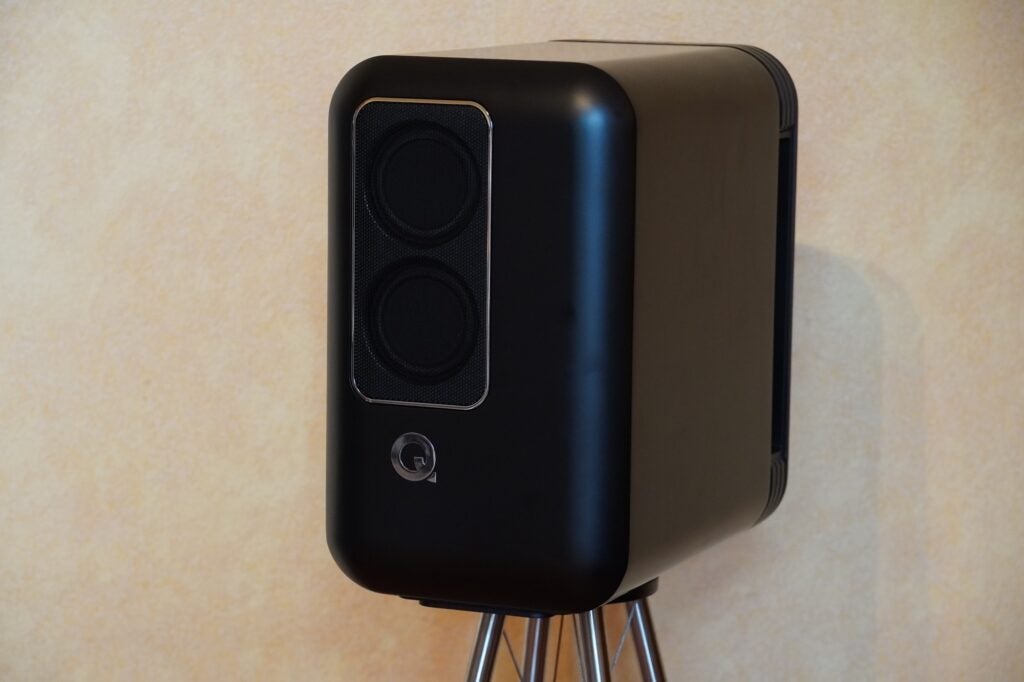
Perhaps what’s most impressive is its versatility in terms of the music it can handle, as well as its almost methodical consistency. Music sounds poised, neutral and transparent. What is Grief? from the Wandavision soundtrack offers a good demonstration of its dynamic ability and unshakeable composure, starting off with a smooth, delicate and finely detailed orchestration before knocking things up a notch in the second half with weighty and punchy rendition of the S.W.O.R.D motif.
The overall feel is one of smoothness but not at the expense of definition. High frequencies are given clarity, sharpness and detail in a manner that makes treble notes sound impressively natural. There’s no element of it sounding overly bright or coarse in the opening notes of Gogo Penguin’s Raven, for example.
Cycling through Daft Punk’s Homework album and the bottom of the frequency range stands out as being tautly defined, but it also lacks a degree of size or assertiveness. In Verdis Quo, communication of low frequencies can sound a tad bland.
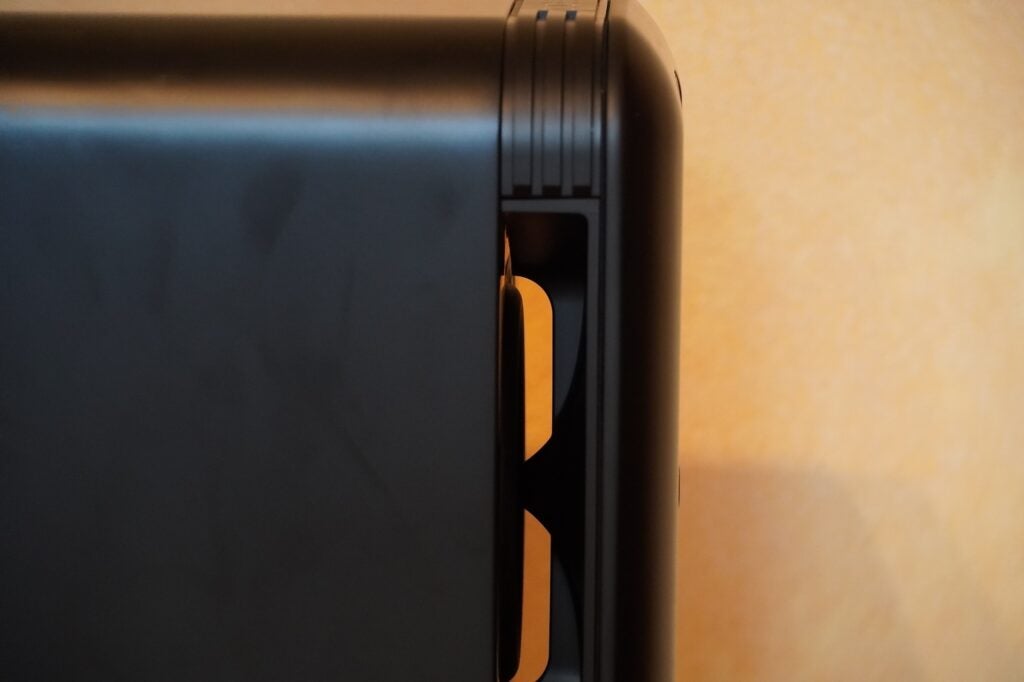
One aspect I was concerned about was the Q Actives’ sense of energy – they didn’t feel particularly propulsive during that first listen. A play of The Prodigy’s Invaders Must Die/It’s An Omen and there’s a nice sense of controlled energy throughout. It’s not a system to let completely loose – there’s always a steady hand on the tiller, I feel – and perhaps for some that will render the Q Active’s performance somewhat restrained.
Moving onto films and the Q Actives have a persuasive dynamic range. The scares in A Quiet Place hit the mark impressively well, bringing out that film’s sound design with its quiet soundscape punctuated by sharp, loud sounds. The opening siege of TENET puts the speakers to work, producing a spacious soundstage for Ludwig Göransson’s propulsive score (and that guitar riff) that’s peppered with raucous gunshots. Turn the volume up and it’s like a party started in your house.
Again, bass is something of a qualified success. In both A Quiet Place and TENET there’s a lack of low end depth you’d get from a bespoke home cinema subwoofer. You can, of course, plug in an external subwoofer to remedy this.
Still, impact sounds have punch to them, and the speakers produce a tactile feel, bringing scenes to life with great clarity. Watching Star Trek into Darkness on Prime Video and there’s a surprising weightiness the speakers are capable of. Vocal delivery is excellent too, emphasising the oodles of detail and space in the midrange. The dialogue in TENET is handled better than some (cheaper) soundbars, especially that scene on the F50 catamarans.
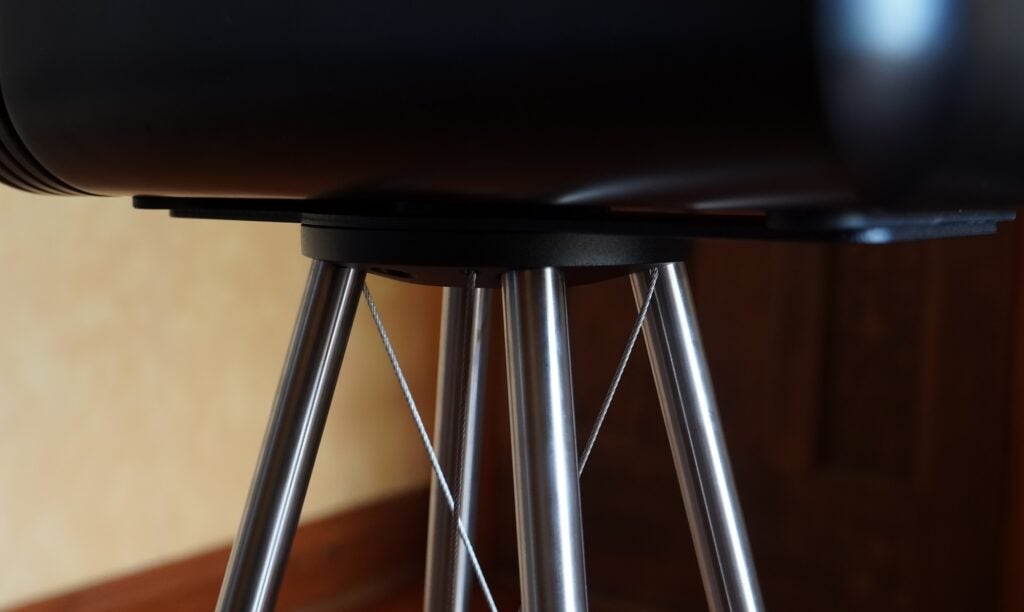
Despite their small size when sat on the Q FS75 stands they still manage to produce a sense of height – the Stukas in Dunkirk do feel as if they’re flying in from above the speaker, and placement of effects matches where they exist on screen.
All that said, I don’t think the Q Active should be thought of as a replacement for a dedicated home cinema system as a) the tempered bass that will likely leave home cinema aficionados feeling a little cold unless they plug in an external sub, and b), while steering across the soundstage is good it’s also rather flatly defined.
The Spinner cars that zoom across the fiery landscape of Los Angeles in Blade Runner lack the weight and sheer size the Samsung HW-Q900T soundbar can summon, the system is never able to fire sounds into the room. Another impression is that with complex soundtracks it lacks that kineticism and raw power for some scenes that would amount to a more thrilling experience.
Gaming benefits from the Q Active’s broad soundstage. The sounds of the gunplay in The Division 2 is akin to a Michael Mann film as shots thunder in an empty New York; while Project Cars 3 it’s more smoothly defined but offers good feedback and low latency as tyres squeal on the tarmac and scrape across sausage kerbs and rumble strips. The Q Actives don’t play in the sandbox of immersive sound, but married with content that suits them they get close to that expansive feeling.
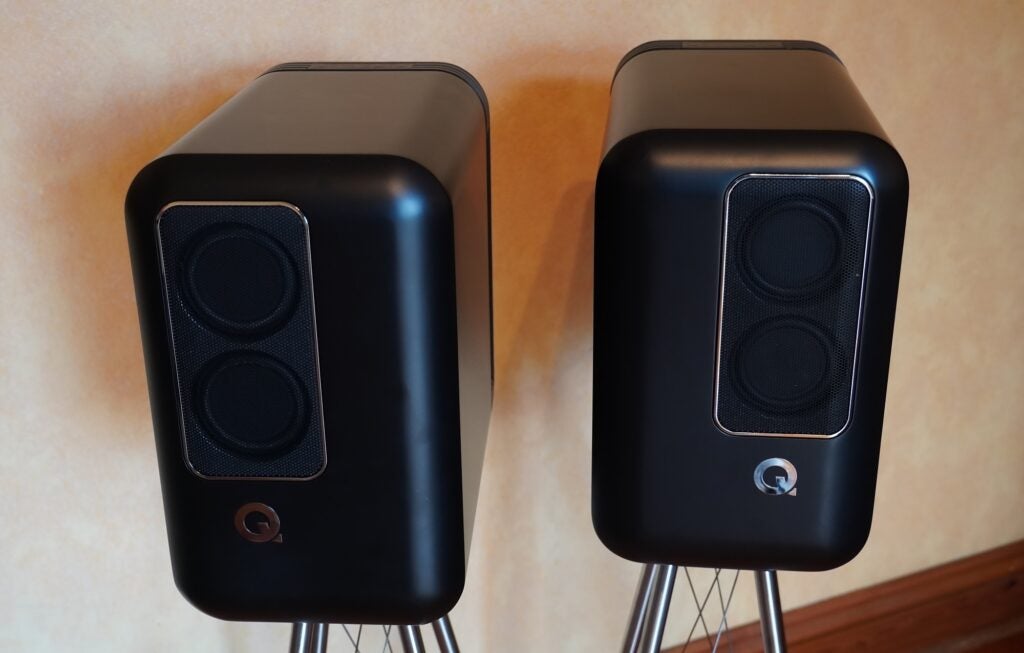
Q Acoustics Q Active 200 conclusion
The Q Acoustics Q Active 200 speakers are impressive, whether that’s from the viewpoint of their versatility to consistency of their sound .
It’s best to think of them as a hi-fi system first. You’d get a better home cinema performance from a dedicated unit, which is no shame on the Q Active itself. If you’re more inclined to have a streaming system, one that hooked up to various sources, then the appeal of the Q Active is clear.
Some will view the controlled performance as rather restrained and I’d agree with that to an extent. And there’s no mistaking the price either, edging towards £2000 if you include the stands. Nonetheless this is an ambitious system, one that acts like a rug that knits all your gear into one seamless system. Mission accomplished.
You should buy the Q Acoustics Q Active 200 if…
-
You want a versatile system: You can plug in a TV, games console, turntable, CD player, a subwoofer as well as stream music from the main music streaming services. Little can escape the clutches of the Q Active.
-
You want that sweet spot erased from existence: With music (not so much for films) the expansive soundstage the Q Active 200 speakers produce with the BMR drivers makes for an audio performance that is consistently even.
You should not buy the Q Acoustics Q Active 200 if…
-
Nearly £2 grand for the whole system is too much: There’s no avoiding the price tag. It’s not as pricey as the KEF LS50 Wireless II, but unless you already have the gear to take advantage of its skills.
-
You want a more exciting performance: The Q Actives aren’t thrilling in the sense of an energetic, thunderous performance, they’re thrilling in a measured, mature way. If you want music with zip, zest and snap, perhaps continue your search elsewhere.


